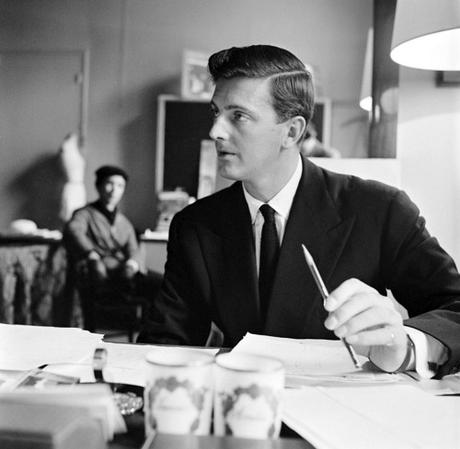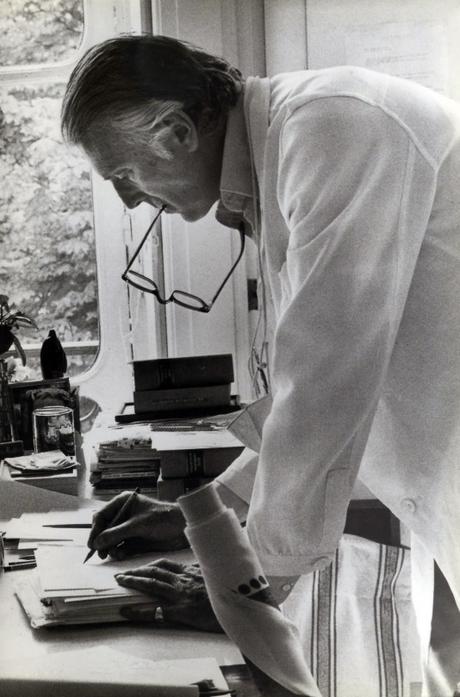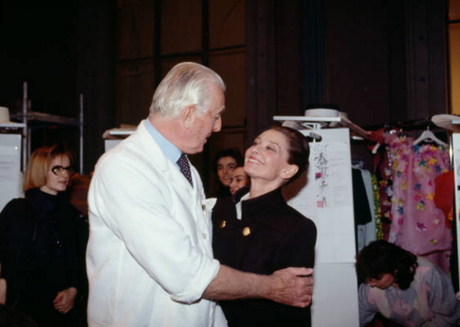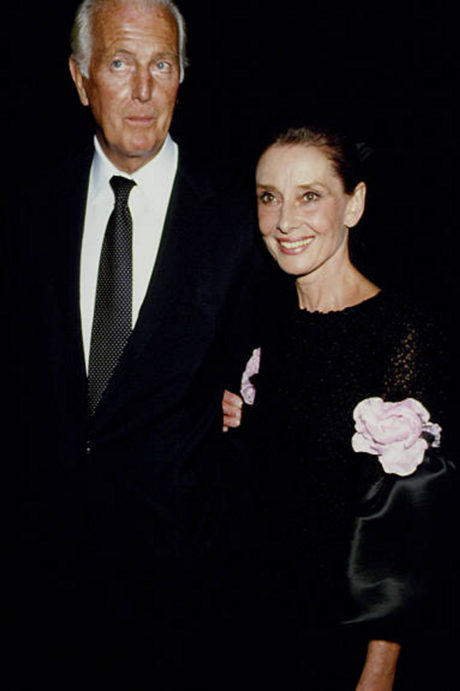
Ten years from now, when we look back at what we wore, I imagine what will strike us is not just the slimness of the clothes – although, there’s that – but also the narrowness of the shoulders. With all the rage these days for soft, unconstructed suits and sport coats, tailors have had to cut their shoulders closer and closer to the wearer’s body. Without the thicker wadding that goes into a more traditional jacket, any extension on the shoulder would just collapse over the shoulder bone. Think of what happens to a shirt when it goes past your natural body.
I prefer a slightly extended shoulder, as it gives the body a more V-shaped silhouette, rather than something that looks too boxy (or worse, an inverted V shape). Save for a brief period in the 1960s, plenty of suits and sport coats were cut like this over the years. And few men wore the style better than Hubert de Givenchy.
Givenchy as a brand today is a shadow of its former self, but the man who started the label is one of the most important names in fashion history. Along with his regular ready-to-wear business, there were the creations he made for Audrey Hepburn, who’s often cited as his muse. His work has a rare combination of formal simplicity and rigorous grace, and Hepburn’s place in history as a classic style icon is as much about her as it is about Givenchy’s skillful tailoring. He made the beautiful white dress she wore in Sabrina; the wedding dress with a dropped torso featured in Funny Face; and perhaps most famous, the fitted, black satin dress seen in the opening of Breakfast at Tiffany’s. There were countless others, which Hepburn wore on and off screen.

Surprisingly, throughout her life, Hepburn was often self conscious of her looks, never feeling as beautiful as she’s been described. She thought her neck was too long; her feet too big; her shoulders too broad. She’s said Givenchy’s tailoring helped hide her faults, giving her a better sense of self-confidence and security. “My work [as an actress] went more easily in the knowledge that I looked absolutely right,” she said. “I felt the same at my private appearances. Givenchy’s outfits gave me ‘protection’ against strange situations and people. I felt so good in them.”
In a large way, Hepburn’s style was about her ability to find what worked for her, and over the years, carefully honing and refining that look. A slightly extended shoulder, for me, is something like that. If you lack that idealized Olympian body shape – with the broad shoulders and narrow waist – good tailoring can give you a kind of silhouette not easily achievable through casualwear. Narrow, unconstructed shoulders are more in style these days, but they rarely flatter.
The tradeoff, of course, is that if overdone, an extended shoulder can look unnatural and forced. Lots of bad examples from the later days of drape style, zoot suits, and Armani. But check out the suits Givenchy wore most of his life. Just a centimeter or so over the shoulder bone is all that’s needed. The designer also likes to couple them with a slightly dropped buttoning point, which elongates the lapels and helps create a U-shaped curve around the chest when the jacket is buttoned.
Givenchy famously admired Cristóbal Balenciaga. And when the Spanish tailor retired from high-fashion in 1968, Givenchy inherited much of his clientele – including ladies of the jetset scene, such as Lauren Bacall, Jacqueline Onassis, and the Duchess of Windsor. Givenchy once said of Balenciaga: “I learned from him that in life and in the profession, you must never cheat. A five-hole button is useless when four are enough.” One of the things I love about tailoring is how great you can look in really simple details and pare everything back to just the cut.
































